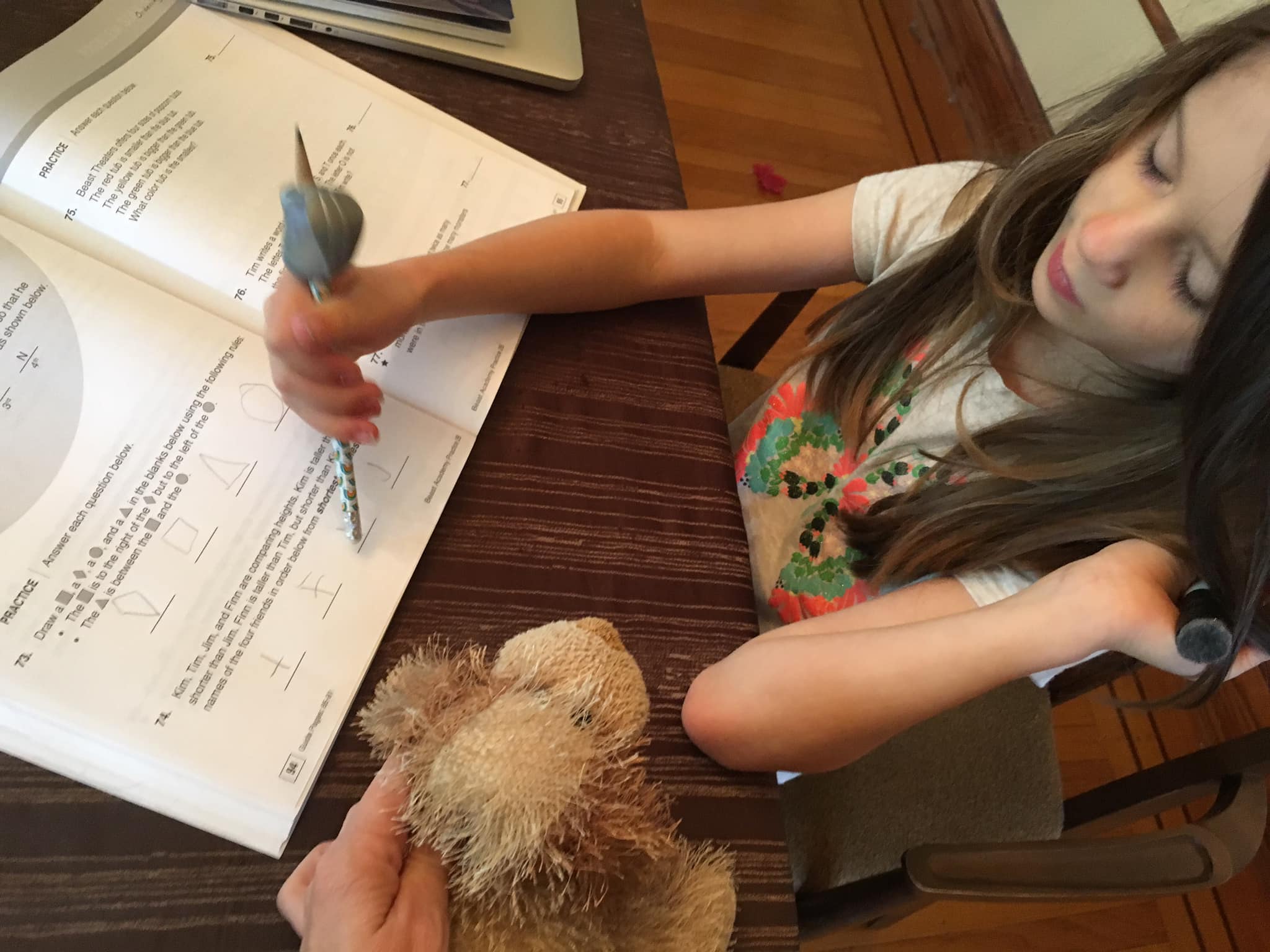Rubber ducking, and Tom the Dog

I introduced Wanda to the old programming trick of “rubber duck debugging.”
In short, when you’re stuck on something that’s just not working, you try explaining it to a rubber duck. By talking it through step-by-step, you see it with fresh eyes, and it helps your brain find the solution. Lots of kids resist “show your work,” but it’s an incredibly important skill, not just for problem solving, but for collaboration: when you’re working in a team, explaining your thinking is critical, so that everyone is operating with the same information. Wanda resisted the idea of rubber ducking until I assured her it’s a real thing that real grown-ups do at real jobs (she was going to reject it as being too little-kid-ish). Wanda is developing into a show-your-work champ.
One step beyond rubber ducking is Tom the Dog. He’s a stuffed animal that I voice; if you’re familiar with play therapy strategies with children, it’s similar. He’s our teammate, and Wanda explains what we’re learning to him so he’s not left out. I tell you, it’s like magic. Wanda’s tension and fear slip away, she loves helping him, and feels responsible for helping him when he’s confused or worried. She shares a lot of her own deeper inner thoughts with Tom, things she wouldn’t think to share with me directly. Wanda does not confuse fantasy and reality, she’s completely aware that she’s of course actually talking to me, but the element of fantasy play is powerful for breaking through barriers and working on the tougher problems, whether they’re logic-based or emotion-based.

